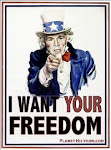Tuesday 25 November 2008
by: Scott Lanman and Dawn Kopecki, Bloomberg
The Federal Reserve Building in Washington, DC. (Photo: Reuters)
The Federal Reserve took two new steps to unfreeze credit for homebuyers, consumers and small businesses, committing up to $800 billion.
The central bank will purchase as much as $600 billion in debt issued or backed by government-chartered housing-finance companies. It will also set up a $200 billion program to support consumer and small-business loans, the Fed said in statements today in Washington.
With today's announcement, the central bank is starting to use some of the unorthodox policy tools that Chairman Ben S. Bernanke outlined as a Fed governor six years ago. Policy makers are aiming to prevent a financial collapse and stamp out the threat of deflation.
"They're trying to put funds into the system, trying to unfreeze these markets," said William Poole, the former St. Louis Fed president, in an interview with Bloomberg Television. "Clearly, the Fed and the Treasury are beginning to take a large amount of credit risk."
The Fed will purchase up to $100 billion in direct debt of Fannie Mae, Freddie Mac and the Federal Home Loan Banks and up to $500 billion of mortgage-backed securities backed by Fannie, Freddie and Ginnie Mae, the statement said.
Help for Housing
"This action is being taken to reduce the cost and increase the availability of credit for the purchase of houses, which in turn should support housing markets and foster improved conditions in financial markets more generally," the Fed said.
Fannie and Freddie bonds rallied. The yield premium on Fannie Mae's five-year debt over similar-maturity Treasuries tumbled 21.5 basis points to 114.7 basis points as of 8:35 a.m. in New York, according to data compiled by Bloomberg. A basis point is 0.01 percentage point.
"The cheaper that they could issue their debt, the more aggressively they should be able to buy mortgages in the secondary market," said Alan Bosworth, director of agency trading at Vining Sparks in Memphis, Tennessee.
Separately, under the new Term Asset-Backed Securities Loan Facility, the Fed will lend up to $200 billion on a non-recourse basis to holders of AAA rated asset-backed securities backed by "newly and recently originated" loans, such as for education, automobiles, credit cards and loans guaranteed by the Small Business Administration, the Fed said.
Commercial Paper
The ABS program is similar to the Fed's effort to bring down the cost of financing for commercial paper, the short-term debt companies issue to finance payrolls and other expenses, because it goes beyond banks.
"What the Fed has been trying to do is get a sense of what works and what doesn't work," said Derrick Wulf, who helps manage $70 billion in mostly fixed-income assets at Dwight Asset Management Co. in Burlington, Vermont. "One of the things that has worked is the commercial paper facility."
Wulf added that "it can certainly improve credit conditions for consumers."
The Treasury will provide $20 billion of "credit protection" to the Fed in the lending program, using funds from the $700 billion financial-rescue package. The Treasury said in a statement that the facility may expand over time and cover other assets, such as commercial and private residential mortgage- backed debt.
"Continued Disruption"
On the ABS facility, the Fed is trying to avoid having "continued disruption of these markets" that would limit lending and "thereby contribute to further weakening of U.S. economic activity," the central bank said.
Under the new lending program, known as the TALF, the New York Fed will auction a fixed amount of loans each month for a one-year term. Assets will be held in a special-purpose vehicle to be created by the Fed. The program will stop making new loans on Dec. 31, 2009, unless the Fed Board of Governors extends it.
Lenders providing credit under the TALF "must have agreed to comply with, or already be subject to," executive- compensation restrictions in the October bailout law, the statement said.
The Fed will start buying the direct debt of government- sponsored enterprises - Fannie, Freddie and a dozen federal home loan banks - through primary dealers in government debt from next week. The purchases of mortgage-backed securities will be done through asset managers, and officials aim to begin the effort by year-end.
Purchases of both types of debt "are expected to take place over several quarters," the Fed said.





















No comments:
Post a Comment